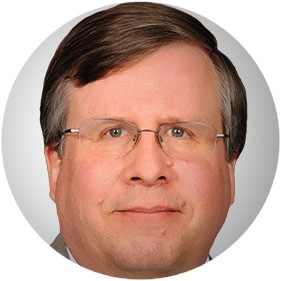
Unveiling the Fed: Journey from 'The Great Oz' to Transparency
March 25, 2024
 By Michael Moreland
By Michael Moreland
Retired Vice President of InvestmentsOne of the evolutions in my investment career was the increasing transparency of the Federal Reserve over time. Decades ago, the Fed was seen as ‘The Great Oz’, its deliberations hidden behind the curtains and then revealed to the public through its actions. Deciphering the Fed’s inner workings was a cottage industry on Wall Street.
One of my favorite quotes from former Fed Chair Alan Greenspan (1987-2006) is, ‘I know you think you understood what you thought I said but I’m not sure you realize that what you heard is not what I meant’. Clarity in public pronouncements was not a priority for the Fed.
Transparency in Today's Environment
The environment is much different today. Except for ‘quiet periods’ around the every-six-weeks meetings of the Open Market Committee (the Fed’s rate-setting arm), Fed members offer regular comments on their outlooks, deliberations, and expectations going forward. These serve a couple of purposes. First, in the context of more information produces better decisions, markets can adjust views and actions gradually. This, in turn, allows the markets to do a lot of the Fed’s work for it unaccompanied by large and sharp reactions to surprises. More communication is a win-win for all.
One of the improvements in the Fed’s communication system is the Chair’s press conference with financial reporters following the release of the Open Market Committee’s policy statement. Some of the questions are good, some not. Answers tend to revolve around a commitment to ‘data dependency’.
A Couple of Questions for the Fed...
If I were to ask questions, I’d be a little more pointed than most we hear. A couple of examples:
- The Fed hung on to the ‘higher inflation is transitory’ mantra until it became clear it wasn’t. You then embarked on the sharpest string of rate hikes in decades and are only now suggesting that a time for easing is likely approaching. You have a large, experienced staff of economists and analysts producing models upon which you (at least partly) base your outlook. How has the experience of the last couple of years changed your analysis and decision-making process?
- The Fed’s dual mandates are to promote price stability and full employment. It’s a careful balancing act. The elephant in the room, however, is the federal deficit – running a trillion dollars plus as far as the eye can see. How do you see the rising supply of debt to be sold affecting your ability to meet your mandates? Related to this, is your plan to shrink the Fed’s balance sheet partly to make room to buy Treasury debt that the markets won’t absorb unless longer term rates are high enough to attract global buyers?
Thank you for your time, Chair Powell.
To close, as always, we appreciate the confidence you show in our services. And, for a little more light reading, here’s a sneak preview of our upcoming quarterly
Economic & Market Commentary.
Talk to your Investment Manager to see how our outlook and plans are built to serve you. Your success matters to us.